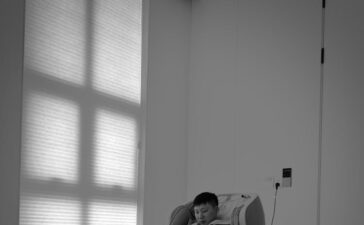Imagine yourself attempting to manoeuvre through a densely populated parking lot while you are backing out. Yes, it is stressful. A mistake could cause an accident or even worse. What if there were a method to make this manoeuvring safer and simpler, though? Reversing cameras can help with that. The way we park and reverse our cars has been completely transformed by these ingenious gadgets, improving safety and averting accidents in the process. In this blog post, we’ll look at the value of reversing cameras, how they operate, their advantages, the various varieties on the market, and installation advice. So fasten your seatbelt as we explore the world of reversing cameras!

What do reverse-cameras do?
Reversing cameras, commonly referred to as backup cameras or rearview cameras, are cutting-edge gadgets made to provide drivers a good view of what’s behind their car while they reverse. These cameras, as opposed to conventional mirrors, provide a wide-angle vision that reduces blind spots and improves sight.
These compact yet potent cameras are typically positioned on the back of the car, either above the rear window or close to the licence plate. They take pictures of the space behind your car in real time and show them on a screen inside your car. This enables you to clearly see any objects, pedestrians, or other cars that may be in your line of sight but not directly in front of you.
Reversing cameras are primarily used to increase safety by preventing accidents that frequently happen while parking and reversing. Drivers can readily spot possible hazards like curbs, poles, low-lying objects, or even adjacent small children playing thanks to the clear vision these cameras provide.
Additionally, larger vehicles with more extensive blind zones, like trucks or SUVs, benefit the most from reverse cameras. By removing such blind spots and providing a clear view above or behind your car,
Reversing cameras have a major impact on improving safety and reducing accidents overall.
These gadgets greatly lower the possibility of crashes, increase parking precision and provide drivers greater peace of mind by giving them a wider field of vision while reversing.
We shall examine how precisely reversing camera technology functions so flawlessly in the part that follows.
So pay attention!
How do reverse-camera systems operate?
Backup cameras and rear view cameras, commonly referred to as reversing cameras, are a cutting-edge technology created to improve safety and avoid accidents. Have you ever pondered how these tiny gadgets actually operate, though?
Reversing cameras work in a rather simple manner. Usually, these cameras are mounted on the licence plate frame or in a special housing on the back of a car. The camera instantly switches on and starts recording a live video stream when the driver shifts into reverse.
Then, a display screen inside the car’s cabin, typically built into the dashboard or the rearview mirror, receives the video feed. Now, the driver doesn’t just have to rely on their mirrors to observe what’s going on behind their car.
But how does all of this come about? Special image sensors are used by reversing cameras to capture high-resolution images even in dim lighting. These sensors translate optical data into electrical impulses that an onboard computer can later process.
These impulses are processed by the computer, which then transforms them into a digital video signal that can be viewed on the dashboard monitor. This enables drivers to see their surroundings in real time while they reverse, making it simpler to avoid hazards like people, other cars, or stationary objects.
Some sophisticated reversing camera systems include functions like distance guidelines and object detection warnings in addition to improving visibility while reversing. These extra features aid drivers in making safe manoeuvres and averting collisions.
By removing blind spots and giving drivers access to vital visual information they would not otherwise have, reversing cameras significantly contribute to increased road safety. It’s understandable why these gadgets have grown more and more popular among drivers all around the world given their straightforward yet effective design and functioning.
Advantages of reverse cameras
Modern cars are increasingly including reversing cameras, and for good reason. These cameras have a number of advantages that can improve safety and reduce accidents.
A major advantage of reversing cameras is increased visibility. It can be challenging to see what’s behind your car when you’re backing it up, particularly if there are blind spots or barriers. With the help of a reverse camera, you can look clearly into the space behind your car and identify any potential dangers or barriers.
Reversing cameras also provide drivers more assurance when navigating confined spaces. Having a visual aid like a reverse camera can provide you peace of mind and assist you in preventing collisions with other cars or objects, whether you’re parking in a packed lot or navigating through congested streets.
Reversing cameras can assist avoid accidents involving pedestrians in addition to enhancing visibility and confidence. Many accidents, it has been found, happen because drivers don’t see people crossing behind them. However, with a reversing camera, drivers may quickly identify people in their blind zones and avert collisions.
Furthermore, the lower chance of accidents and expensive repairs means that adding a reversing camera can possibly result in lower insurance costs. Insurance companies frequently offer discounts for cars with security systems like these cameras.
It is impossible to overstate the advantages provided by reverse cameras. These technologies are unquestionably useful tools that considerably contribute to safer driving experiences, from improved sight to better confidence while manoeuvring in tight places and averting accidents involving pedestrians.

The various reversing camera kinds
Reversing cameras are available in a wide range of configurations to accommodate various requirements and tastes. Everything is accessible, from simple models to cutting-edge features. Let’s look at a few of the various reverse camera options available to you.
- Wired Cameras: This is the standard type of reversing camera, and it needs wire to connect to the dashboard display in your car. They offer a steady connection and a good video feed.
- Wireless Cameras: Wireless cameras are a good option to think about if you prefer an easy installation method. They do away with the necessity for intricate wiring by wirelessly transmitting video signals to the display panel.
- Licence Plate Cameras: As the name implies, these cameras are made to be mounted on the frame of your licence plate. They provide a great view behind your car and are convenient and simple to install.
When selecting a reverse camera system that best meets your needs, keep in mind to take into account elements like image quality, night vision capabilities, waterproof ratings, and durability.






